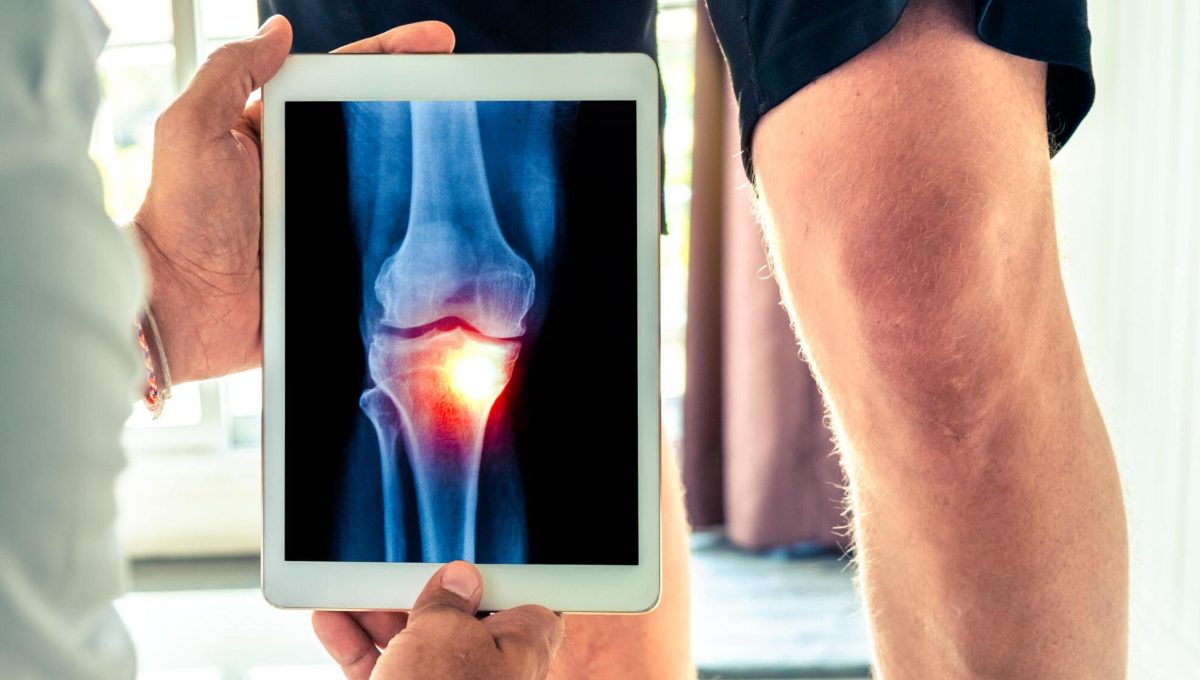Stem Cell Therapy for Osteoarthritis: How Does It Work?
Research on stem cell therapy has continued to progress over the past few years, offering millions hope to fight chronic diseases. In several clinical studies and trials, stem cell treatment has shown promising results for treating various medical conditions, such as orthopedic conditions, autoimmune diseases, neurological disorders, cardiac problems, muscular dystrophy, and aging.
Stem cells could revolutionize osteoarthritis treatment, providing sustainable relief from symptoms Osteoarthritis patients, particularly those with damaged knees, report that conservative measures like pain medications, exercise, weight loss, and lifestyle changes have been ineffective in reducing pain and discomfort. These treatment options fail to address the root cause and only offer temporary relief. If the condition worsens, knee replacement surgery is the only option.
This blog discusses the therapeutic benefits of stem cell therapy for osteoarthritis treatment, its cost, and the best treatment facility in Mexico.
Table Of Contents:
What is Osteoarthritis?
Osteoarthritis (OA) is a common orthopedic condition when the cartilage tissues covering the ends of the bones in the joints start deteriorating. This degenerative joint disorder mainly affects aged individuals because the cartilage continuously wears and tears away. Due to constant cartilage degeneration, the ends of the bones lose their protective cushion-like coverings and start rubbing against each other.
Chronic joint pain, inflammation, swelling, and stiffness are the prominent symptoms of OA, resulting in loss of joint function and mobility. Osteoarthritis primarily affects knee, hip, and shoulder joints. Although a common age-related orthopedic condition, OA can also impact young individuals with a history of joint damage, injury, or surgery.
Stem Cell Therapy for Osteoarthritis
Stem cell treatment is a novel regenerative approach to enhance your body’s healing mechanisms from the inside and support cartilage regeneration. Stem cells are unique cells in the human body that can develop into any cell type and duplicate themselves.
Out of all the stem cell types, mesenchymal stem cells (MSC) derived from umbilical cord tissue have gained the maximum attention of researchers and healthcare professionals. MSC-based therapy has shown great promise in treating severe inflammatory conditions like Rheumatoid Arthritis and Osteoarthritis due to their anti-inflammatory and immunomodulatory properties.
Human umbilical cord tissue-derived mesenchymal stem cells (HUCT-MSCs) are young cells with high proliferation capacity, ideal for treating various medical conditions. Upon reaching the affected joints, stem cells regenerate healthy cartilage, help alleviate osteoarthritis pain, and restore joint function.
Related Read: Can Stem Cell Therapy Provide Relief From Chronic Knee Pain?
Why Should Osteoarthritis Patients Choose Stem Cell Therapy?
Several studies show that stem cells, when introduced into the injured site, transform into specialized cells to accommodate the needs of the damaged tissues. For instance, stem cells delivered to damaged cartilage in knees differentiate and develop into cartilage tissues. Let’s look at the remarkable benefits stem cell therapy offers OA patients.
-
-
- Natural repair – Stem cell therapy utilizes the renewal and regenerative potential of umbilical cord tissue-derived stem cells to address the underlying cause of OA which affects joints, causing intense knee, hip, or shoulder pain. Its healing mechanisms slow down cartilage degeneration and repair damaged tissues.
- Immunomodulation – A study on MSC therapy for osteoarthritis treatment indicates that the stem cells regulate the immune response with their immunomodulatory properties, preventing further wear and tear of ends of the bones and improving symptoms in patients.
- Anti-inflammatory effects – Stem cells release anti-inflammatory factors or cytokines like TGF-β and IL-10, which suppress joint inflammation and reduce pain, enhancing patients’ quality of life.
- Effectiveness – Various studies testing the efficacy of stem cell therapy concluded that the MSC treatment using cord tissue-derived stem cells offers high efficacy in reducing the severity of Osteoarthritis. Most patients undergoing the procedure have reported tremendous improvement in their joint condition.
- Safety and feasibility – The treatment of OA utilizing the potential of stem cells showed no prolonged side effects or abnormalities in blood tests or health function indices. Stem cell therapy is, therefore, a safe and reliable treatment option for osteoarthritis patients.
- Minimally invasive – Stem cell therapy is a non-surgical procedure that has given hope to millions who do not want to experience painful and complicated knee or hip replacement surgeries. Administration of stem cells through intravenous infusions or direct injections into the affected joints is minimally invasive and takes an hour or two to complete.
- Short recovery period – Unlike surgeries, stem cell treatment is an outpatient procedure requiring less time. The post-treatment recovery period is minimal as patients can typically resume their normal activities within 2-3 days of receiving the injections.
-
Key Findings of Experts on Stem Cell Research For OA
Discover expert insights on revolutionary stem cell therapy, a pioneering regenerative medicine approach transforming osteoarthritis treatment and care.
-
-
- Phase I/IIa study on Arthritis on a small sample size indicated that mesenchymal stem cells effectively alleviate pain and restore joint function, flexibility, and mobility over a 52-week study.
- Studies on the Rat model showed that injecting mesenchymal stem cells reduces the histopathological and clinical severity. The reduced release of inflammatory cytokines significantly suppresses inflammation in the affected areas.
- Meta-analysis and systematic review of stem cell-based therapy showed no signs of adverse events post-treatment, suggesting it to be a safe and reliable treatment option for OA.
- Another study on mouse models with HUCT-MSCs significantly reduced the severity of the osteoarthritis condition.
-
Read Also: Healing Power Of Stem Cell Therapy: A Comprehensive Guide
How Much Does Stem Cell Therapy Cost For Osteoarthritis?
The cost of stem cell therapy depends on various factors, such as the location of the treatment facility, types of stem cells, sources of stem cells, dosages, and duration of the treatment. For instance, stem cell therapy in Mexico is cheaper than in other countries such as the United States, Colombia, Singapore, Thailand, etc.
Dosage plays a vital role in determining the cost of the therapy because doctors recommend higher doses for more severe Osteoarthritis. Furthermore, the price varies depending on the procedure of stem cell administration. The cost for site injections, such as knee pain, is usually lower than for intravenous infusions, where cells can circulate throughout the bloodstream.
Best Institute For Advanced Stem Cell Therapy For Osteoarthritis
Life Altering Stem Cell Therapy Institute is a distinguished clinic for affordable stem cell therapy in Mexico, known for its innovative treatments and highly qualified medical professionals. With a notable presence in Mazatlán, Mexico, the institute strives to make a healthier and brighter tomorrow by revolutionizing the treatment of severe and chronic diseases like Parkinson’s disease, Alzheimer’s disease, Autism, Crohn’s disease, Rheumatoid Arthritis, Osteoarthritis, Psoriasis, and many other life-impacting medical conditions.
We understand that every individual is different and hence, we carefully plan a personalized treatment protocol that addresses your unique body’s needs. Our trusted medical team and patient coordinators ensure patients have a safe and comfortable stem cell therapy journey at our reliable stem cell center in Mexico. Book a consultation today with our stem cell therapy expert and start your journey towards healing. Doctor Josemaria Torres Farber specializes in treating arthritis conditions such as knee, hip, or shoulder pain and has successfully treated top athletes worldwide.
Conclusion
The medical community, researchers, and patients have high hopes regarding the therapeutic potential of stem cell therapy for Osteoarthritis. This regenerative medicine treatment offers promising results in alleviating pain, inflammation, and swelling in the joints, potentially avoiding invasive surgeries. Cell-based treatment provides long-term relief and improves the quality of life of patients.
Although research on stem cells for treating osteoarthritis pain is ongoing, the future looks optimistic, given their immense potential to transform the treatment landscape with their regenerative power.
Can Stem Cell Therapy Help With Rheumatoid Arthritis?
There is a lot of debate and discussion among medical researchers regarding stem cells and their medicinal applications. It is considered helpful for patients suffering from chronic diseases. Many doctors worldwide already use stem cells for treating Rheumatoid arthritis, an autoimmune condition impacting the lives of nearly 54 million individuals in the United States and is the reason for persistent joint pain and inflammation.
Stem cell therapy helps manage chronic pain and slows down the progression of Rheumatoid Arthritis, improving patients’ overall health. This blog post is a comprehensive guide to stem cell therapy for Rheumatoid Arthritis and how it works to relieve arthritis pain.
Why are stem cells used in treating Rheumatoid Arthritis?
Rheumatoid Arthritis (RA) is a chronic inflammatory disorder where the body’s immune system starts attacking its healthy tissues instead of protecting the body from foreign invaders and infections. In RA, the most affected areas are joints in the hands and feet, resulting in inflammation, pain, stiffness, swelling, and loss of function.
Although pain-relief medications are available for treating RA, the results are insufficient in the sense they only provide temporary relief. Therefore, introducing stem cells in medical science has brought new hopes to patients. Stem cell therapy is one of the pathbreaking advancements that showed great promise in alleviating the symptoms of Rheumatoid Arthritis.
Now, the question is, “What is so special about stem cells?” Stem cells are undifferentiated cells in the human body, capable of dividing and duplicating themselves. They can differentiate into any particular cell type, such as cartilage, bone, or nerve cell. Stem cell experts and advocates believe that when the cells are delivered into affected areas, they transform to meet the body’s specific needs.
Where do the stem cells come from?
Stem cells can be isolated from various sources, such as bone marrow, fat or adipose tissues, hip bone, and umbilical cord tissue. Because of their high proliferation capacity and multipotency, mesenchymal stem cells derived from umbilical cord tissue are the most common cell type used in treating rheumatoid arthritis
The process of stem cell collection is termed harvesting. After extracting cells from their sources, they are concentrated and processed in a clinical laboratory to prepare stem cell injections.
Read Also: Healing Power Of Stem Cell Therapy: A Comprehensive Guide
Who can receive stem cell therapy for Rheumatoid Arthritis?
There are no specific professional guidelines on who can or cannot receive stem cells. The decision rests on the doctors and medical professionals in charge of the treatment.
To ensure the safety of the patients, most doctors consider specific criteria before recommending cell-based therapies to their patients. For instance, they will check your age and weight and other health vitals to see whether you are physically fit for the treatment.
They may also assess your medical history, the severity of the RA symptoms, and the extent of joint damage before giving you a green signal for receiving stem cells.
Healing Mechanism of Stem Cells For Treating RA
With their unique regenerative power, stem cells promote the repair or replacement of damaged tissues in the affected joints. Most often, stem cells are administered to the patient’s body via intravenous infusions. The cells travel through the bloodstream to reach the target areas and start healing.
Rheumatoid Arthritis leads to joint degeneration due to damage or loss of cartilage tissues, bone erosion, and joint deformity. The critical goal of stem cell therapy is to reverse the damage by stimulating the production of healthy cartilage tissues and restoring joint function and mobility.
Regenerative treatment approaches like stem cell-based therapy address Rheumatoid Arthritis by targeting the root cause. Stem cells have immunomodulatory agents that regulate the immune system, preventing the self-immunological attack on its tissues.
The injected stem cells differentiate and form cartilage cells to replace the damaged tissues and aid in developing healthy cartilage. They release growth factors and cytokines that slow cartilage degeneration and prevent further loss or damage. Moreover, stem cells’ anti-inflammatory properties suppress inflammation in the joints and decrease pain.
Benefits of stem cell treatment for Rheumatoid Arthritis
Medical research and studies suggest that using mesenchymal stem cells might be beneficial in addressing the underlying mechanisms causing Rheumatoid Arthritis. Let’s see how this innovative regenerative approach aids in treating RA.
- Tissue Regeneration – RA is a degenerative disorder, and stem cell therapy could potentially reverse the damage caused to the cartilage tissues in the joints and regenerate new tissues. When MSCs reach the target areas, they signal other cells to stimulate the body’s innate healing process to renew functional cartilage-developing cells.
- Symptom Relief – Results of a clinical trial on 40 RA patients published on Stem Cells Translational Medicine in 2016 showed significant improvements in their symptoms and joint condition after the therapy.
- Immune Modulation – Stem cells help restore the immune system response and prevent its attack on the healthy body tissues with the increase in levels of T cells. It reduces pain, swelling, and inflammation by regulating the inflammatory response in the affected joints.
- Safety – Cell-based regenerative therapies are reported safe in most studies with no long-term side effects. However, there might be mild side effects after receiving stem cells, like nausea or headache, which is very common and nothing to worry about.
Related Read: Effectiveness and Safety Of Stem Cell Therapy For Arthritis
Why Are Stem Cells Better Than Traditional Treatments?
Stem cell therapy offers several advantages over conventional treatments, so most patients suffering from Rheumatoid Arthritis are considering this regenerative treatment approach.
- Stem cell infusions are minimally invasive, painless, and relatively quick.
- The recovery period is brief, and patients can be up and walking after one to two days.
- There are no side effects of stem cell therapy, unlike pain-relief medications.
- Stem cells have minimal rejection risk because the treatment harnesses your cells or young umbilical cord tissue cells.
How to know If I am fit for stem cell therapy?
The best way to know whether you are the right candidate for stem cell treatment is to speak to your healthcare professional or contact a specialist at a stem cell therapy clinic.
The concerned doctor will assess your current symptoms, medical history, and overall health before determining your eligibility for treatment. You can fill up this patient application form to find your if you are a fit candidate.
Stem Cell Center in Mexico
Mexico has been a famous destination for medical tourism, especially when it comes to stem cell therapy. The cutting-edge technology, robust healthcare system, affordable treatments, and presence of skilled and qualified healthcare professionals make Mexico the leading stop for cellular therapies. Hence, it is no surprise that Mexico has some renowned stem cell clinics.
Life Altering Stem Cell Therapy Institute is a name you can always rely on if you are in Mexico or considering coming to the country for stem cell therapy. Being a recognized institute for stem cell therapy in Mexico, we work to provide patients with high-quality treatments in our state-of-the-art facility.
We use stem cells derived from umbilical cord tissue because research indicates that these are young cells with high therapeutic potential compared to other sources. We follow all the highest safety standard protocols in our therapy procedures to ensure the complete safety of the patients.
Concluding Thoughts
Treating Rheumatoid Arthritis is complex because it is an autoimmune disorder resulting in the degeneration of cartilage tissue due to an overactive immune response. Medical scientists worldwide evaluated stem cell therapy as the most potent regenerative medicine capable of stimulating the body’s natural healing process and treating various medical conditions.
For Rheumatoid Arthritis treatment, stem cells modulate the immune system response and reduce joint pain by suppressing inflammation. With the help of therapy, patients can experience improved joint function and mobility and enjoy a better quality of life.
To know more about stem cells, their therapeutic effects in treating Rheumatoid Arthritis, and the cost of stem cell therapy in Mexico, please schedule a consultation with our medical experts.
Effectiveness and Safety Of Stem Cell Therapy For Arthritis
Stem cell therapy is emerging as a breakthrough treatment for Rheumatoid Arthritis, a chronic autoimmune disorder characterized by joint pain and inflammation. Regenerative medicine has gained popularity due to its therapeutic opportunities to repair damaged tissues, ease pain, and improve immobility.
Mesenchymal stem cells can differentiate and multiply into any cell type and modulate the immune system. This property is utilized in stem cell therapy to replace damaged tissues in the joints and regenerate new cells in Rheumatoid Arthritis (RA) patients.
Overview of Stem Cell Therapy For Arthritis
In stem cell treatment for Rheumatoid Arthritis, mesenchymal stem cells (MSCs) are administered intravenously into the patient’s body to replace or repair damaged tissues and promote cartilage regeneration. The extraordinary capabilities of the MSCs to self-renew and regenerate tissues, also called cell differentiation, is attributed to the healing mechanism of the therapy, aiding in pain management.
Benefits Of The Stem Cell Treatment For Arthritis
Although recent data and numerous clinical studies show that stem cell therapy delivers promising results, it cannot be considered a “definitive cure” for arthritis. However, patients can expect significant improvements in their joint condition and symptom relief after receiving stem cells. The therapy has shown promising outcomes in RA patients in terms of reduction in pain and improvement in quality of life.
The therapeutic potential and benefits of stem cell therapy for arthritis include –
- Pain and symptom relief – RA patients have shown significant health improvement and reported reduced joint pain, swelling, inflammation, and stiffness. These are the common symptoms most patients go through, and hence, cell-based therapy has successfully managed them effectively.
- Disease Modification – Cellular healing using stem cells modifies the course of Rheumatoid Arthritis. Studies reported a notable decrease in the activity of the diseased immune cells after the treatment, leading to improved patient health.
- Immune Modulation – Human umbilical cord tissue-derived stem cells (HUCT-MSCs) are rich in immune-modulating properties that aid in regulating immune response and alleviating RA symptoms.
- Tissue Regeneration – Tissue repair and regeneration are stem cells’ primary functions, potentially reversing the damage RA causes to the joints and cartilage.
- Anti-inflammatory effects – MSCs get exposed to inflammatory agents released from the injured tissues and tone down inflammation with their pro-inflammatory properties.
Effectiveness of Stem Cell Therapy For RA Patients
Stem cell therapy has been proven to positively impact the imbalanced immune responses in patients with autoimmune diseases, and RA is one of them. Enough credible evidence is there to establish the immunosuppressive capabilities of mesenchymal stem cells, inhibiting the growth of cytotoxic T-cells. MSCs can regulate the overactive immune system and suppress inflammation that worsens RA.
The newly introduced stem cells can self-renew and regenerate into cartilage cells. At the same time, these cells release cytokines or proteins to slow cartilage degeneration, reducing pain and discomfort.
A study was conducted on 64 patients of Rheumatoid Arthritis in 2019 to understand and evaluate the effectiveness of stem cell therapy. All the patients have reported significant improvements in their physical strength, mobility, diet, and sleep after the treatment. No new signs or symptoms were detected in the patients throughout this study. In RA, rheumatic nodules form around the joints in the hands and fingers, making it impossible to keep them straight. Fortunately, the study shows that three years post-treatment, joints in the hands and fingers can be stretched freely as the nodules in the joints become soft and start fading.
The efficacy of stem cell treatment was relatively high compared to traditional drug therapy, such as anti-inflammatory and anti-rheumatic drugs. The disease recurrence rate is very high, along with long-term side effects. Most importantly, the conventional treatment approaches can neither slow the progression of RA nor promote damaged tissue repair and regeneration. However, stem cell therapy using mesenchymal stem cells derived from umbilical cord tissue positively impacts patients with stable outcomes, demonstrating its long-term efficacy.
The therapeutic effects of MSCs have significantly improved the quality of life of RA patients, stabilizing the immune system and decreasing inflammation.
Read Also: Stem Cell Therapy – What To Expect From The Treatment
Safety Of Stem Cell Therapy
Although typically reported as safe in most studies and clinical trials, patients should know that there might be some mild side effects, such as temporary swelling, pain, headache, vomiting, or nausea. The human umbilical cord tissue, or Wharton’s Jelly, is a source of newly born cells, minimizing the risk of unwanted reactions.
Further, the 2019 stem cell therapy study on 64 RA patients found the treatment safe. Their blood tests and other health vitals showed no signs of long-term abnormalities. The results of this primary research showed reduced inflammatory markers. Further, the researchers concluded that mesenchymal stem cells derived from umbilical cord tissues delivered long-term efficacy, ensuring patient safety.
Conclusion
Arthritis affects nearly 130 million individuals worldwide. Stem cell therapy is considered a promising therapy for Arthritis patients, delivering positive results in restoring joint function. By promoting new cartilage growth and tissue regeneration, it provides relief from pain and discomfort. The intrinsic properties of mesenchymal stem cells have made researchers put them in therapeutic use for potentially treating severe medical conditions.
Stem cells influence tissue regeneration through paracrine effects by communicating with existing cells, signaling them to change their behavior. When new cells are systemically introduced into the patient’s body via intravenous infusions, they migrate to the target-specific sites and differentiate into cartilage cells to replace or repair the diseased tissues.
Deciding to get stem cell therapy for Rheumatoid Arthritis?
Fill out our patient screening application form to find out if you are an eligible candidate for stem cell treatment. Life Altering Stem Cell Therapy Institute is a renowned stem cell center in Mexico that strives to improve patients’ lives by utilizing the power of regenerative medicine and providing top-notch stem cell therapies with utmost care.




